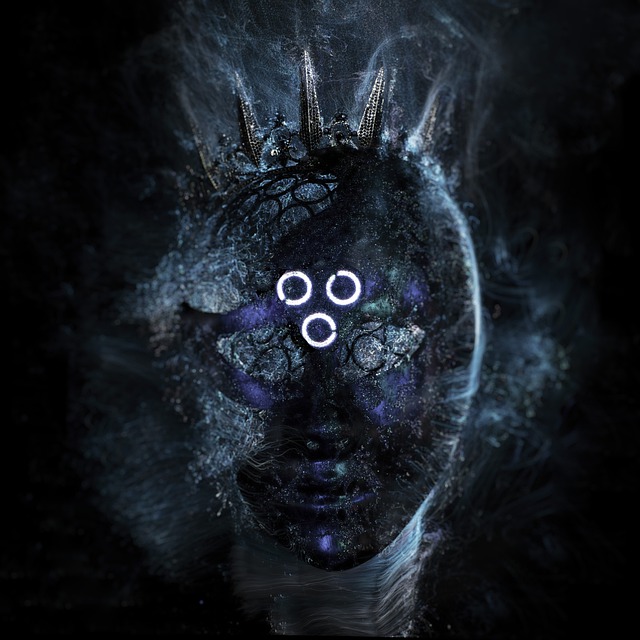
Luke Slater Talks Techno: “Things Always Change, Always Mutate. I Try and Embrace That” – Selector
“Music has always been such a savior for me. It sounds really cliché, but writing it and listening to it kind of allowed me to escape. And although that might seem cowardly, I’ve always kind of believed in what it represents, a certain freedom that goes with music,” longtime techno producer Luke Slater told Selector over Zoom from his London home.
At its core, since its birth in the ’80s Detroit underground, techno has always been about freedom, self-sufficiency and experimentation—creating sounds of the future to get people moving. In that sense, Luke Slater has always been techno. In his early DJ days in the late ’80s and early ’90s, he was part of the U.K. dance contingent popularizing Detroit-inspired techno across the pond.
In 1989 he dropped his debut single, “Momentary Vision” (under the name Translucent) as a white label on his own Jelly Jam Records, a grooving breakbeat techno number. It would be two years before he dropped more tracks to shake up the U.K. techno scene, but he’s been on roll ever since.
To him, techno is best defined by its Detroit roots that first inspired him to produce it himself.
“For me, as an artist, it goes right back to the origin of house and techno, especially people like Juan Atkins,” Slater explained. “[In] 1983, he did ‘Clear’ by Cybotron, which really didn’t fit in with hip-hop [or] electro at the time. That was probably the first techno record I ever heard. And there was this kind of melancholy thing about it, but it had a lot of rhythm.”
“And then when house came along at the end of the ’80s, that was really the connection for me, that rhythm can come from machines,” he continued. “I loved that. That really bore into my soul.”
The British DJ and producer has kept himself busy exploring and expanding the nuance and range of techno with a prolific output over the past three decades. He has done so under a handful of aliases including Planetary Assault Systems, Clementine, Morganisitic, and The 7th Plain, to name a few.
As clubs remained shuttered with COVID-19 running wild, he was understandably uninspired to make dance music. In the first months of the pandemic he savored time at home with his family and worked on an experimental collaborative project with Anthony Child (a.k.a. Surgeon), KMRU, Lady Starlight, Speedy J and Tom Moth (Florence + The Machine‘s harpist) called DIALOGUE.
The project is composed of four spacious ambient musical dialogues (15-24 minutes long) between the artists that reflect the distance and uncertainty we all felt in 2020. “It was kind of really fitting for the time, but after that was done, there had to be more,” Slater shared.
He went on, “It was a hunger I haven’t experienced since I first started… I was just dying to get back to the events, to play, just to be out there again. And so that’s really how the [latest] Planetary album came about.”
After vaccines were rolled out to the public in 2021 and the possibility of DJing finally appeared on the horizon again, the creative flame within Slater was reignited. “When things looked like they were opening up, I wanted to go back to the roots and just write,” he said.
Yet he didn’t know where to start. His wife Heidy Slater reminded him that people really liked his track “Give It Up” from his 2019 Planetary Assault System double EP, Straight Shooting. So, he started with that as an inspiration, building around that style and the TR-909, with a heavy sprinkling of rebellious energy.
In a sense, Slater made Straight Shooting as much for himself as for his fans. He crafted it “purely for imagining that things were gonna open, the festivals, everything. It was like, ‘When I play again, this is what I want to play. I want to be around this.’”
The result was his latest album (released October 2021) as Planetary Assault Systems, Sky Scraping, which he describes as “straight off the shovel.”
Planetary Assault Systems is one of his most active aliases and home to some of his hardest techno. For Slater, aliases offer a way to organize his music after he makes it, as he finds himself working on music much of the time, and multiple things at once.
“I think if I was just working on one thing, I’d overthink it too much,” he said. The aliases also represent different parts of him and offer more outlets for his creativity, keeping his sense of freedom in music alive, as he feels less limited by fans’ expectations for one specific sound.
“When I go out and play, people know me. And people have got a lot in their minds [lately], they’ve been through a lot, Slater explained. “They’ve had to deal with exactly the same kind of anxieties and changes in their life as me and everyone else. So if I’m going to do a gig, I’m not going to try and be teaching right now. They want to hear the records I make, so that’s exactly what I’m going to be playing. It’s not so much giving people what they want, but just being true to what you’re really good at and what you’re known for.”
Huge huge thanks to all @berghain over the weekend ! ??? Wow , coming together extraordinaire , can’t put into words that feeling with all ,after such a long break from the club . ???
— Luke Slater (@reallukeslater) November 2, 2021
While COVID-19 variants and vaccination challenges have kept a full return of nightlife at bay, in July 2021, Slater was finally able to get back to DJing. A few months later, in November, he had his first set back at the legendary Berghain.
“It was an amazing night, and I felt that everyone there had this kind of spirit of like ‘We’ve won. Yes, we are back.’ It was quite an emotional set to do, to be honest. I was super happy,” Slater beamed. “I’m glad I got to do it right before it shut down again.”
Back in the seemingly distant pre-pandemic days of late 2019 and early 2020, Slater worked with Berghain’s label, Ostgut Ton, to create Berghain Fünfzehn, a seven-track album made up entirely of sounds and samples from their catalogue, which dates back to 2005. The arduous creative process was inspired by a Richie Hawtin album from years ago where he took tracks apart to build new ones.
“It was one of my crazier ideas. (Laughs.) Ostgut sent me every single track they’ve ever released. And then I would take samples and loops from each set of 12 [tracks] and make a new track,” Slater recounted. “And I thought, ‘Well, that sounds like a challenge.’ So that’s exactly what I did. Someone at Ostgut helped, we had a kind of a Henry Ford system going… Daniel put everything into Ableton Live for me so I could go through and choose. On the album, there’s seven tracks, but I actually wrote, like, 34 tracks. It took about six months and yeah, it was mad.”
When asked how he feels that techno and the culture around it has shifted since he started producing it 33 years ago, Slater reminded us that change is constant. “It’s always changing. I was doing this before the internet (Laughs), so I’ve seen a lot of changes,” the “Engine One” producer said with a smile.
“Back in the day, the only time people would read anything that I said was if I did an interview. That’s how close you got to someone who was writing the music unless you hung around them, he recalled. “And it’s really different now, because everyone’s speaking, everyone’s on social media. I think that’s okay. I think it’s pretty cool…Things always change, always mutate. I try and embrace that.”
Even as techno and technology constantly morphs and mutates, to Slater, the essence of a great techno track is straightforward: “Rhythm. Capturing the rhythm. I think that’s the hardest thing to get right. It’s all about the beat.”
While the techno community continues to grapple with its “business techno” shadow—the DJs, promoters and brands that put profit above all else—Slater reminds us that no one can truly kill its essence.
“The other day, someone on Twitter with a lot of followers said, ‘Rest in peace techno.’ I’ve heard that so many times over the years,” he said. “Techno, the concept of it, of what dance music is, it’s not a phase or fad or a current trend. It’s a revolution that happened a long time ago, and it’s kind of embedded in all electronic music.”
Source: https://selector.news/2022/01/10/luke-slater-planetary-assault-systems-interview/



